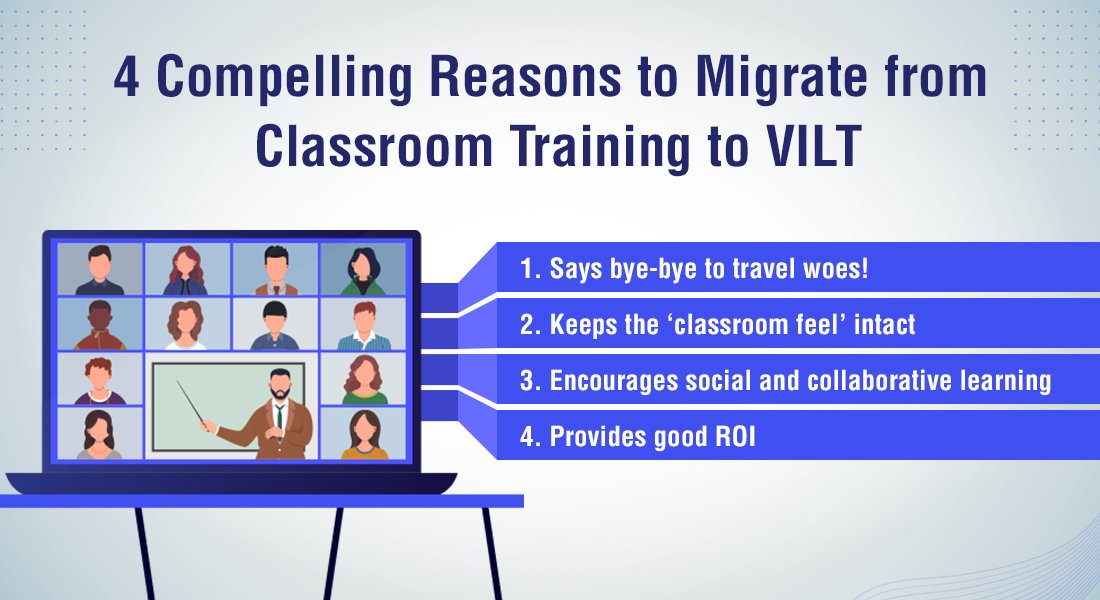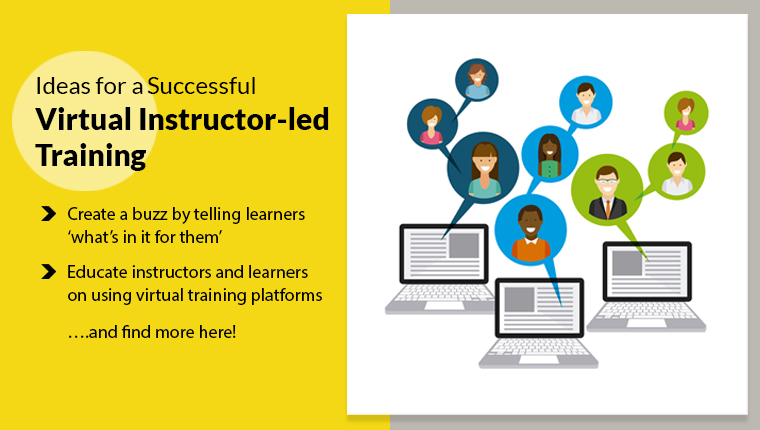Virtual instructor-led training (VILT) is the closest digital replica of in-person classroom training; it enables learners to have real-time interaction with the instructor, providing most of the benefits of traditional classroom training from the comfort and safety of their homes. It saves on cost and time and is especially useful for employees dispersed in different locations, making learning easily accessible.
We all agree that online services make our lives easier. But although virtual instructor-led training has been available since the 1990s, it has taken until now foronline learningto gain widespread acceptance. Virtual training only peaked in 2020 because of the stay-at-home orders issued during the coronavirus pandemic.
Types of Online Training Solutions
In this scenario, organizations are increasingly opting for online training, either synchronous or asynchronous, to ensure uninterrupted learning.
What Will You Miss Out on if You Aren’t Using VILT?
Benefits of VILT for Corporate Training
- Reduced Cost
- Increased Convenience
- Modular Design
- Increased Capacity and Scalability
Synchronous online trainingrequires the presence of both learners and instructors in the session at the same time, but from any place. Examples include:
- Video Conferences
- VILT
- Webinars
- delivere时广播讲座d
Asynchronous training,on the other hand, allows learners to acquire information at their own speed and time, without the presence of an instructor. Examples include:
- eLearning
- Microlearning
- Videos
Let’s now explore what VILT offers.
What Does VILT Offer?
Benefits of VILT
Reduced cost and increased convenience
The very nature of VILT eliminates travel and lodging expenses almost entirely. Typically, the organization is responsible for all travel and other costs for classroom training and significant amounts of money could be saved on this with VILT.
From the learner’s perspective, they could attend any course they’re interested in (whatever the time, and wherever the location) on their preferred device – at home, at the office, or on their mobile devices.
Investing in VILT ensures that everyone, regardless of location, has access to professional development.
Modular design
Many VILT programmes offer training in short, incremental modules that can be taken separately or with other training methods, enabling a blended learning experience that appeals to busy learners and professionals as it is easily adaptable to changing jobs and responsibilities.
Explore the art and science of designing blended learning solutions.
Increased capacity and scalability
VILT can be used to deliver training to many learners at the same time, thereby saving on the resources and space required for traditional classroom settings, although having too many people in each session can also be counterproductive.
Factors for Successful VILT
VILT enables organizations to provide effective learning for employees, customers, and partners while saving money on travel and accommodation and valuable time away from work. Thesuccess of VILTnecessitates the smooth interplay of three critical factors: technology, content, and delivery.
Technology
The technology for VILT is built on comprehensive and scalable collaboration software that offers functionality, availability, and usability. The comprehensive set of engagement tools often include live conversations, chats, polls, and quizzes, all of which will be controlled and monitored by facilitators.
Features such as polls, quizzes, and screen sharing are needed to ensure VILT replicates the physical classroom effectively (to enable learner engagement and collaboration). Microsoft Teams, Google Meet, and Cisco WebEx are a few popular platforms that offer all these features.
Content
Available classroom material can’t be used ‘as is’ in VILT. You will need to really break it down into different sets of content. You will need participant guides and facilitator guides. When creating facilitator guides, include detailed instructions on how to carry out the activities.
If you are planning to use worksheets or templates in breakout rooms, you will also have to design all those worksheet exercises, PDFs, and documents.
Delivery
Facilitators need to be trained on how to conduct VILT activities and how to use the technology. Whether qualified instructors or subject matter experts, they also need to be effective communicators to engage learners in the session.
可能需要额外的主持人或主机to help the facilitator – to manage activities, collate responses, or supervise the groups in breakout rooms. Your LMS (Learning Management System) can also be used to send reminders about the upcoming VILT sessions on a regular basis.
Explore how the multilingual shell eliminates LMS challenges.
Best Practices for Effective, Learner-Centric Virtual Instructor-led Training
Employees who do not feel connected to their peers tend to feel a little isolated.Icebreakers and games– short and simple activities designed to help learners become familiar with each other – are one of the simplest ways to ensure employees form stronger bonds.
Uselearning activities and mediathat are like those used in the classroom. Don’t let the variety of media and online tools available for VILT overwhelm you; whenever possible, incorporate as many classroom-based activities into your VILT session as possible.
Instructor-ledbrainstorming sessionscan be replicated in virtual classrooms, with the help of the virtual whiteboarding feature (available on most platforms) to explain content, allowing participants to interact with the annotation tools.
You can also use thechat functionalityto have participants summarize what has been covered in 10-15 words, just like you would in the classroom.
The training should not end with the VILT sessions, as performance support will help your learners do their jobs better. This performance assistance can take the form of topic summaries on the LMS/portal. You can take the summaries beyond the traditional text-based formats and make them into:
- Interactive PDFs/eBooks
- Infographics
- Visual checklists
- Short how-to videos
- Whiteboard animations
- Flowcharts
For more best practices or to learn more about designing and delivering effective, engaging virtual classroom sessions, download this eBook.





![VILT Challenges: Crack Them Like A Pro! [Infographic]](http://www.vine9.com/wp-content/uploads/2020/08/vilt-challenges-solutions-corporate-training.png)
